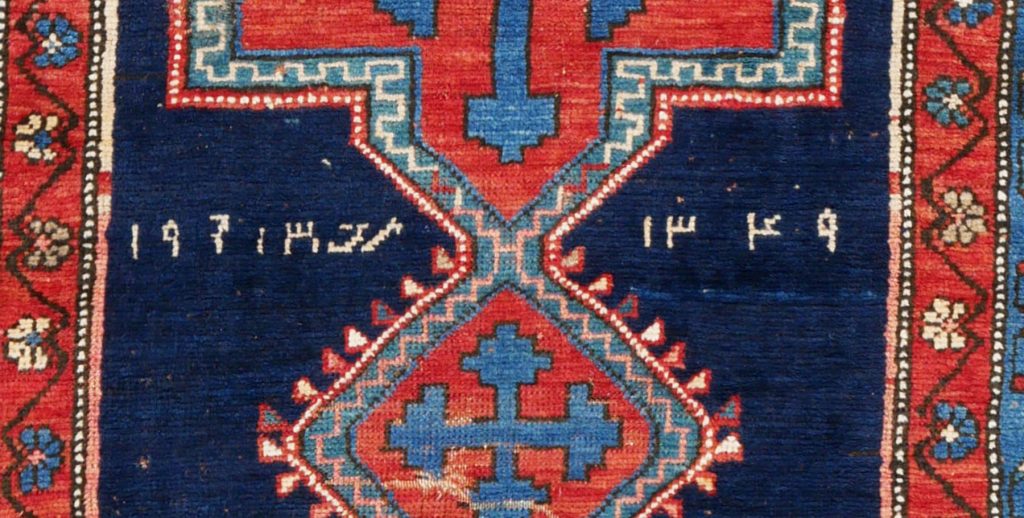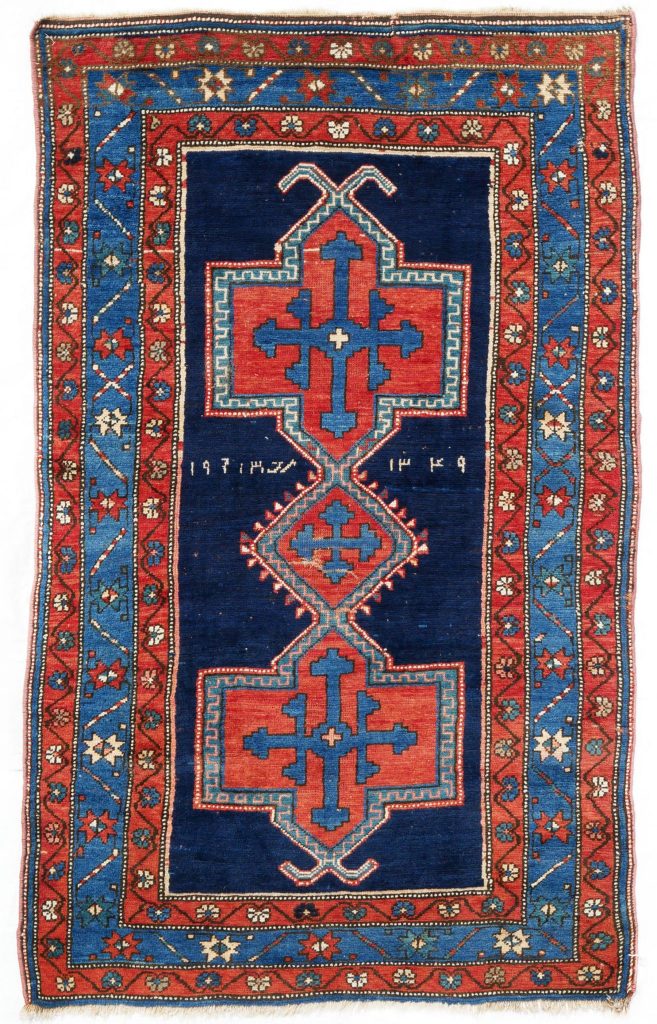
Here is an example of a Kazak rug which if the study of dyes were to be applied by the experts, the suggested production period wold be likely attributed to the end of the 19th or the beginning of the 20th century.
There is no presence of any synthetic materials, and the style seems unaffected by the state-imposed Soviet aesthetics which left no room for fantasy and whimsicality of the pre-Soviet Azerbaijan.
The date on the rug however contradicts this type of the reasoning and renders the antique ‘a rare case of confusing identity’

The date on the rug in Arabic numerals appears to be 1931, or 1971. In Indian numerals, it is repeated as ١٣٣٤/1334.
1349 + 582 = 1931
1349 + 624 = 1973 (approximate date)*
The notion of the rug being an artifact from the 1970s can be easily ruled out, but illegibility of the date on the rug doubtless adds to the confusion.
This argument proves how cautious one must be when assessing the age of a given textile artifact.
Whether it is a stylistic, dye or date study, ample room ought to be reserved for a margin of error
A.G.
* Iran officially adopted the solar calendar on March 25th, 1925.

